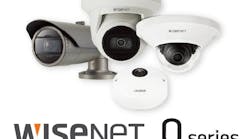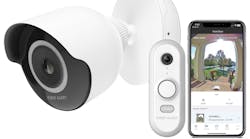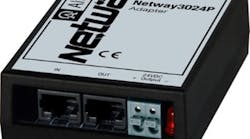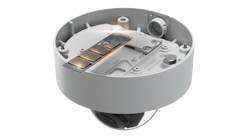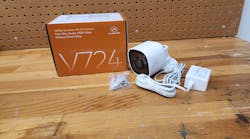A bidding process is one of the best methods for leveraging a company’s (the customer’s) negotiating ability and purchasing power with suppliers. There are different ways the customer can get pricing and a whole lot more from vendors when they want a system.
The request process brings structure to the procurement decision and allows the risks and benefits to be identified clearly up front.
TERMINOLOGY USED IN THE REQUEST PROCESS
IFB (invitation for bid) is an invitation for suppliers, through a bidding process, to submit a proposal on a specific product or service. If not stated otherwise, the supplier with the lowest bid is awarded the contract, provided that they meet the minimum criteria for the bid.
An RFP (request for proposal) typically leaves all or part of the exact structure and format of the proposal response to the suppliers’ discretion. The creativity and innovation that suppliers choose to build into their proposals may be used to judge supplier proposals against each other.
An RFP typically involves more than a request for the price. Other requested information may include basic corporate information and history, financial information about the supplier to ascertain they will be able finish the project they start, professional references and other projects of a similar nature the supplier has already completed. It also may include detailed product information if an ‘equivalent’ has been offered; product availability and estimated completion date.
RFQ (request for quote) is a standard business process whose purpose is to invite suppliers into a bidding process to bid on specific products and/or services. An RFQ typically involves more than the price per item. Information like payment terms, quality level per item or contract length are possible to be requested during the bidding process.
RFQs often include the specifications of the items/services to make sure all the suppliers are bidding on the same item/service.
The suppliers have to return the bidding by a set date and time to be considered for an award.
RFQ allows different contractors to give the quotation and among that, the best quote will be taken.
A Request for Information (RFI) is a standard business process whose purpose is to collect written information about the capabilities of various suppliers. Normally it follows a format that can be used for comparative purposes.
So a RFI is primarily used to gather information to help make a decision on what steps to take next.
A Request for Tender, commonly abbreviated to RFT, is a structured invitation to suppliers for the supply of products and/or services. The majority of RFT’s are published by government sector
GETTING INTO CCTV
My company saw that a lot of the traditional locksmithing work was dropping off. It began late last year, and the monthly receipts were sinking. Nothing really was different; there were no new competitors in our market. The phone stopped ringing as often.
Those of us in the shop who did electronics weren’t feeling the slow down, however. We were always hopping. But we are always jumping on sales leads and getting our quotes out to the clients. We were always responding to our existing customer base and keeping them feeling warm and fuzzy.
The traditional locksmiths aren’t much into writing proposals. They’re into doing rekeys and mortising deadbolts. The guys answering the phones automatically flip any callers who utter the words electronics, video, security, access control or alarms over to us.
The rest of the calls get either dispatched out or fumbled. If it sounds a little complicated, if it requires some thought and perhaps might involve some delayed gratification, they lose the buzz; their minds wander and the client might not get called back.
The owner recognizes that the electronics are going to keep us afloat, so we’re bidding work all over the state.
The bidding process is pretty much the same routine each time, so once you’ve gotten the some of the typically required information into your computer, you can use it over and over - information such as certificates of insurance, your licenses, and your company’s background.
We’re running a couple of jobs right now. Both are for schools. One is a college about an hour down the Interstate. The other is a school district about 40 minutes away over local roads.
The college knew which brand of DVR they wanted, and had rather specific specs for the cameras. They called out a brand of camera that turned out to be nothing that exotic. Some company was importing cameras and tweaking them a little , then branding them as their own hot item. They were all interior dome cameras, and they were all to be installed in a single building.
Upon investigation we realized three things. First, we’d be bidding against this guy, so forget about getting competitive pricing from him for the cameras. Second, if we went through conventional distribution, we couldn’t keep our price competitive. Finally, we could email the factory in China, buy direct, and eat everyone else’s lunch. We chose the last option.
I went to the walk-through and sized up the competition. Vendors were coming in from everywhere. The representatives were mostly beginners, but young and nevertheless threats.
The bid spec was poorly written even though it clearly listed the equipment required. It was a fill in the blank type form, and the way the labor was to be shown, either with the hardware or with the cabling, was mystifying. The school knew their building, and could have shown cable run lengths for each camera, but they didn’t and they were not responsive to requests for floor plans.
So I guessed the runs, squeezed the distributors for the lowest price I could for the plenum cable, and we offered our equivalent cameras in the bid.
We won the job. The wire pulls went fine; I had budgeted in enough time for us to make extra. Our camera pricing beat every other bidder significantly. We were low across the board, and yet we made out very well. And by winning this one, we automatically are guaranteed the next video project using the same pricing structure which worked great on the first install.
The other project took longer to set up. The client had somehow come up with a camera count for each of the schools, but not much more.
The initial RFQ asked for both video as well as electronic access control. Then they couldn’t get the money together. Then they could get some of the money. Finally they decided they could do 100 cameras in two different schools. They issued the PO to us on a Monday. Then we all walked through each facility Wednesday and Thursday while the client and her entourage made actual decisions regarding the placement and type of cameras to be used. We then did a fast walk through on Friday to plot wire runs and measure cable runs.
We had our crew in there the following Monday pulling wire.
We obtained our cable for the two schools from Windy City Wire (www.smartwire.com) We went direct. This company ships fast and supplies their wire with the amount used and the amount remaining embossed on the cable. They also supply the wire on spools which are housed in sturdy cartons and have developed a system of dollies, racks and hand trucks which help transport the cable and greatly assists in setting up and actually pulling the wire. These systems are referred to as RackPack RackStak and RackTrak. We are pulling six runs at a time and it is saving us a bundle.
Pulling wire can be a drag. We’re using these telescoping ‘gopher poles’ from www.pushpullrods.com. We happened to get ours from our local datacom supplier, but they may also be purchased direct from the website. They have a wide assortment of tools designed for the installer.
Terminating the coax is an art in itself. BNC connectors must be applied to both ends of each camera cable. My favorite BNC is from Gem Electronics. Each BNC is supplied with three different ‘ferrules’ so the BNC connector can be installed on a variety of different coax wire types including RG59 plenum and non-plenum, as well as RG-6
Each of these cable types have a different outside diameter, and proper attachment of the BNC to the cable is imperative for the best video signal. Gem has their products on their website (www.gemelec.com) along with a lot of interesting information about proper procedures for applying BNC connectors.
Besides connectors, they also have strippers and crimpers to speed up the installation process and help guarantee the connectors are on the wire correctly.
Is video fun? Well not exactly, but the owner of my company doesn’t mind that we’re going to bring in six figures for these projects in an otherwise non-spectacular year.
